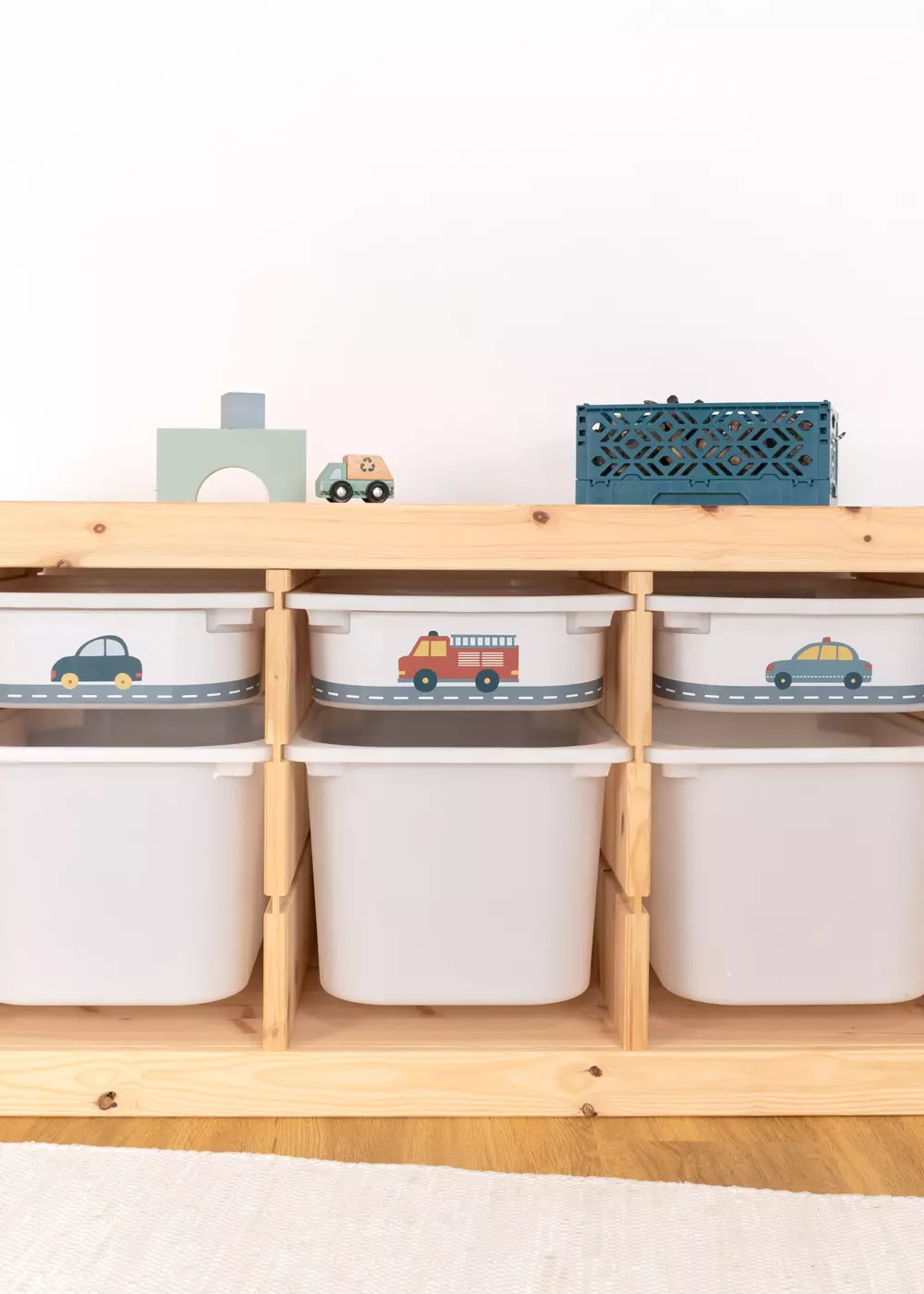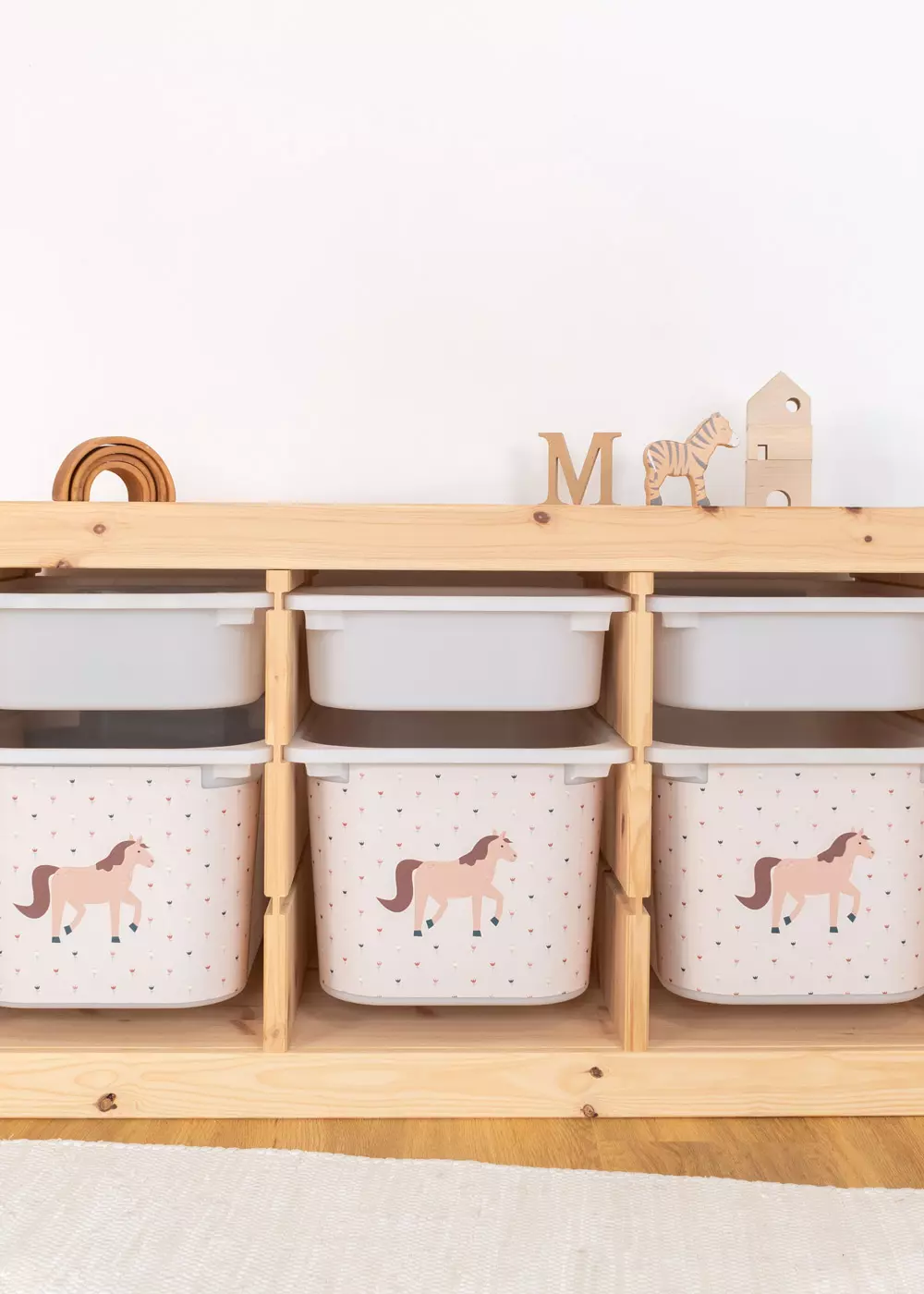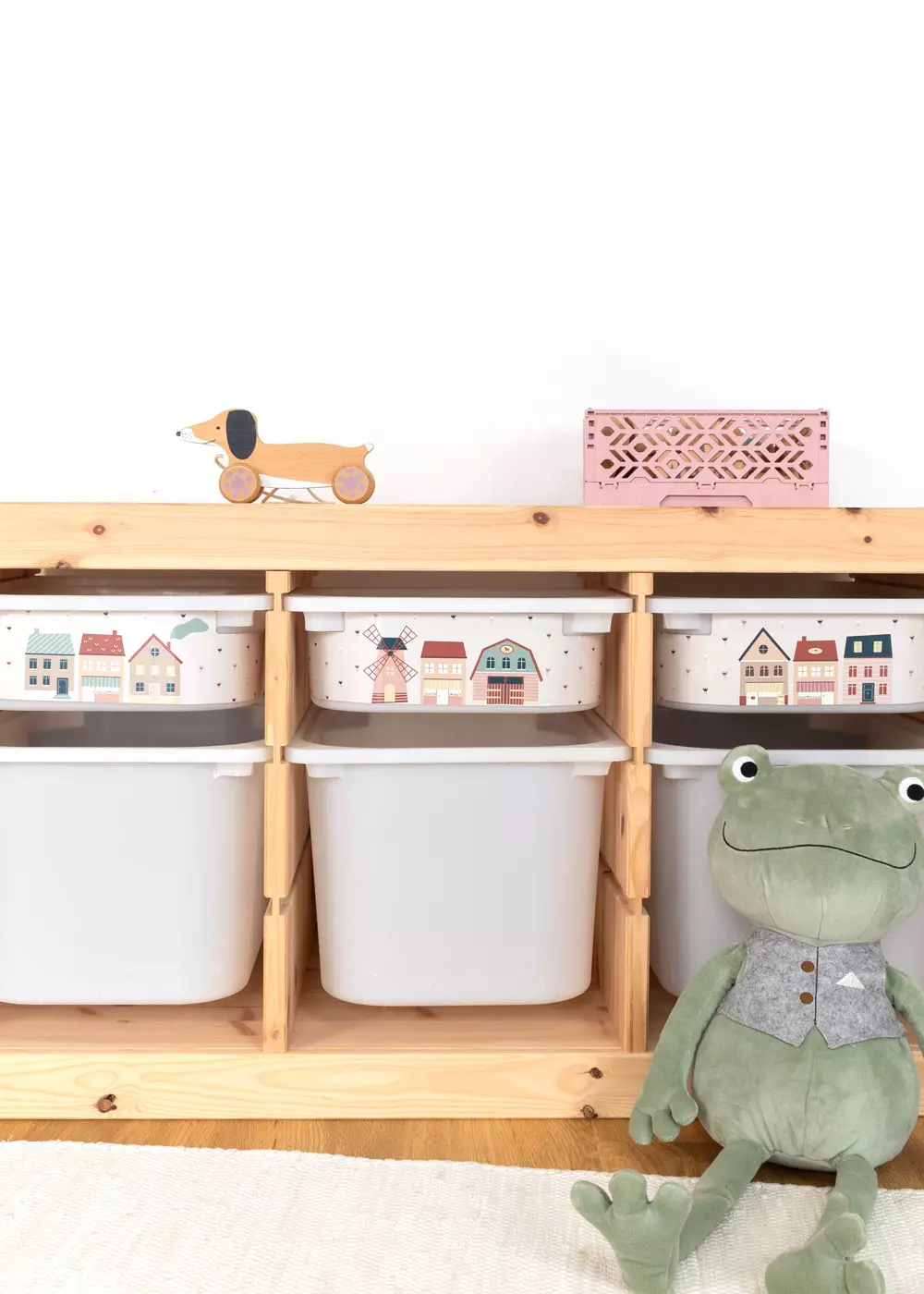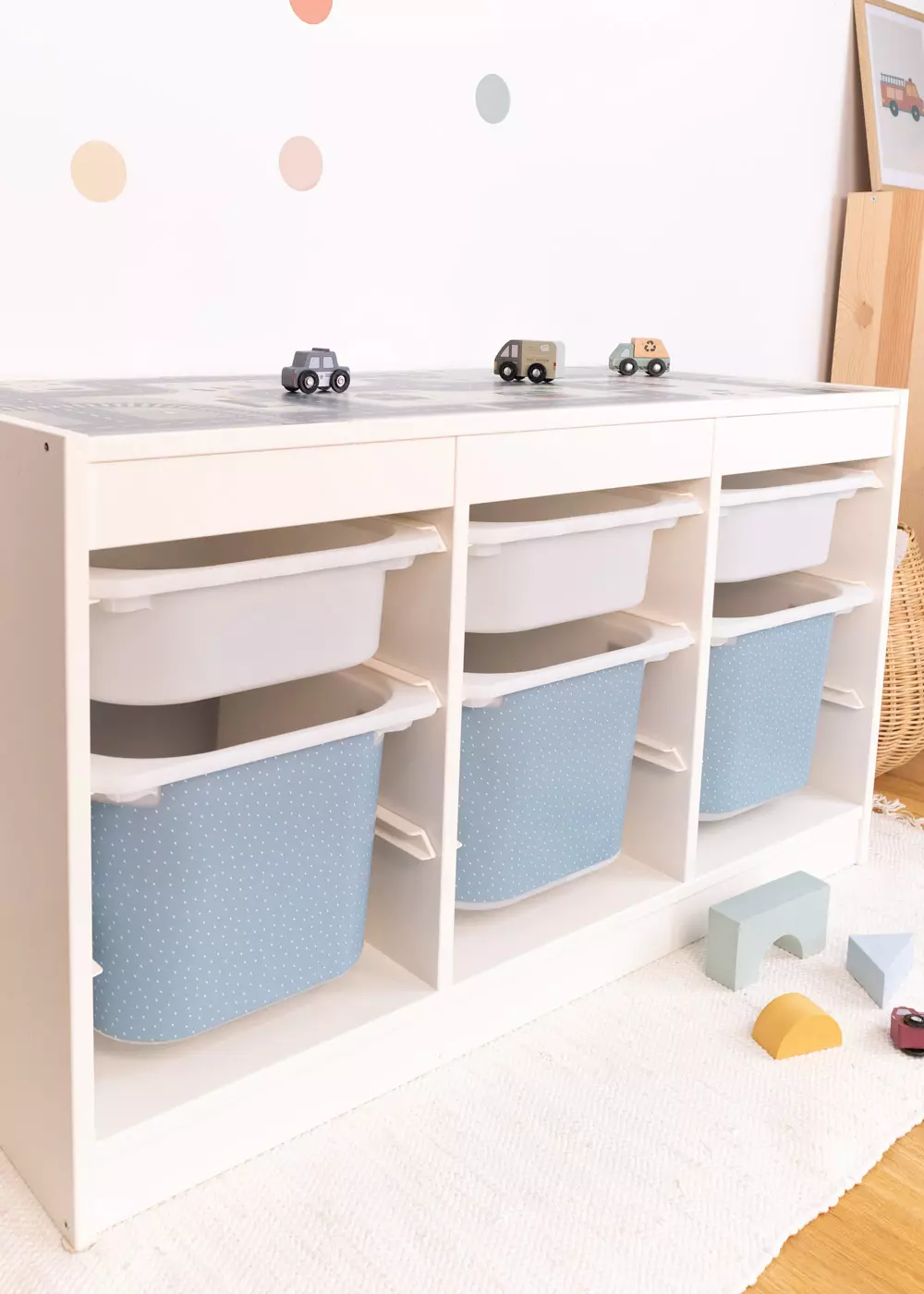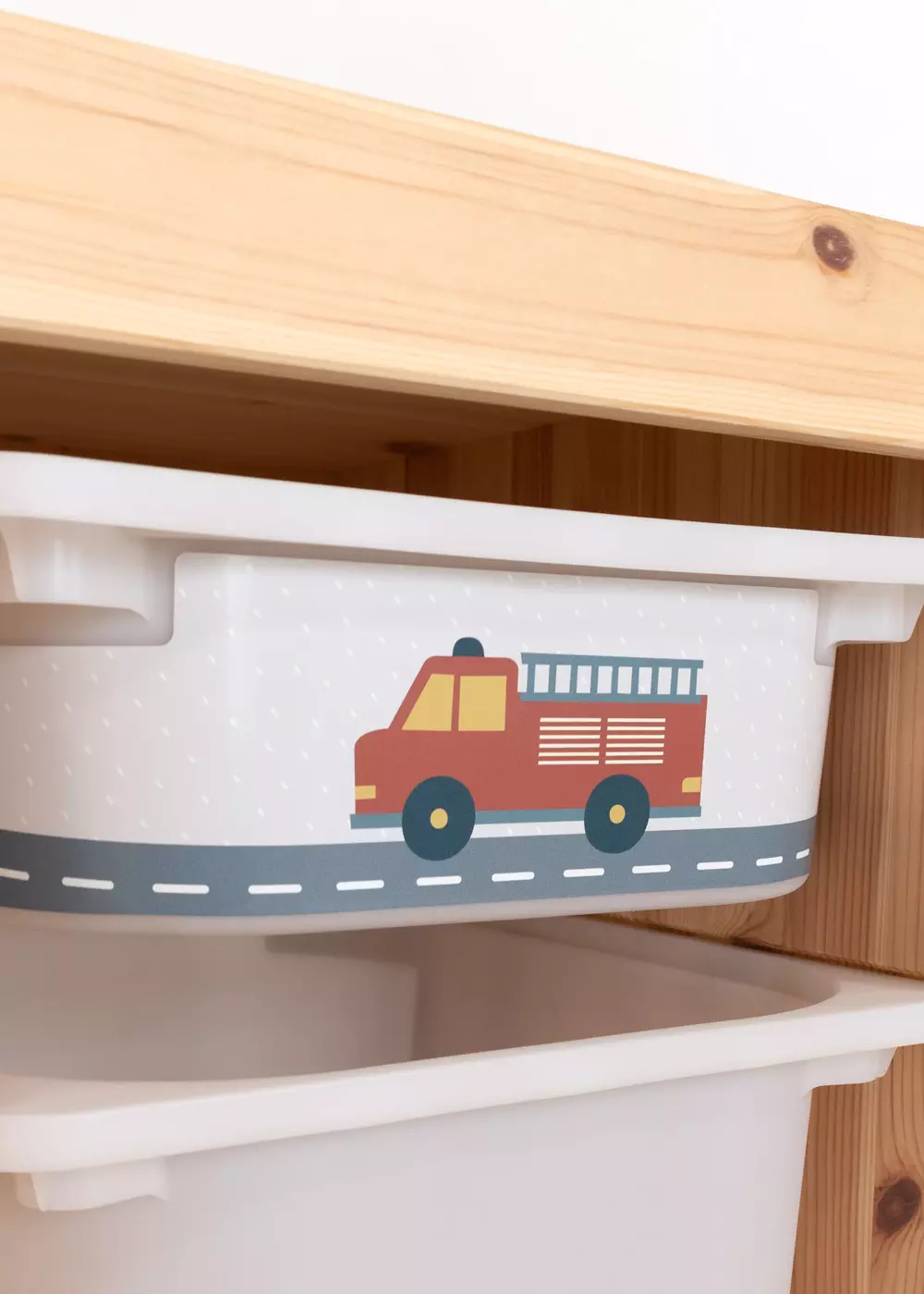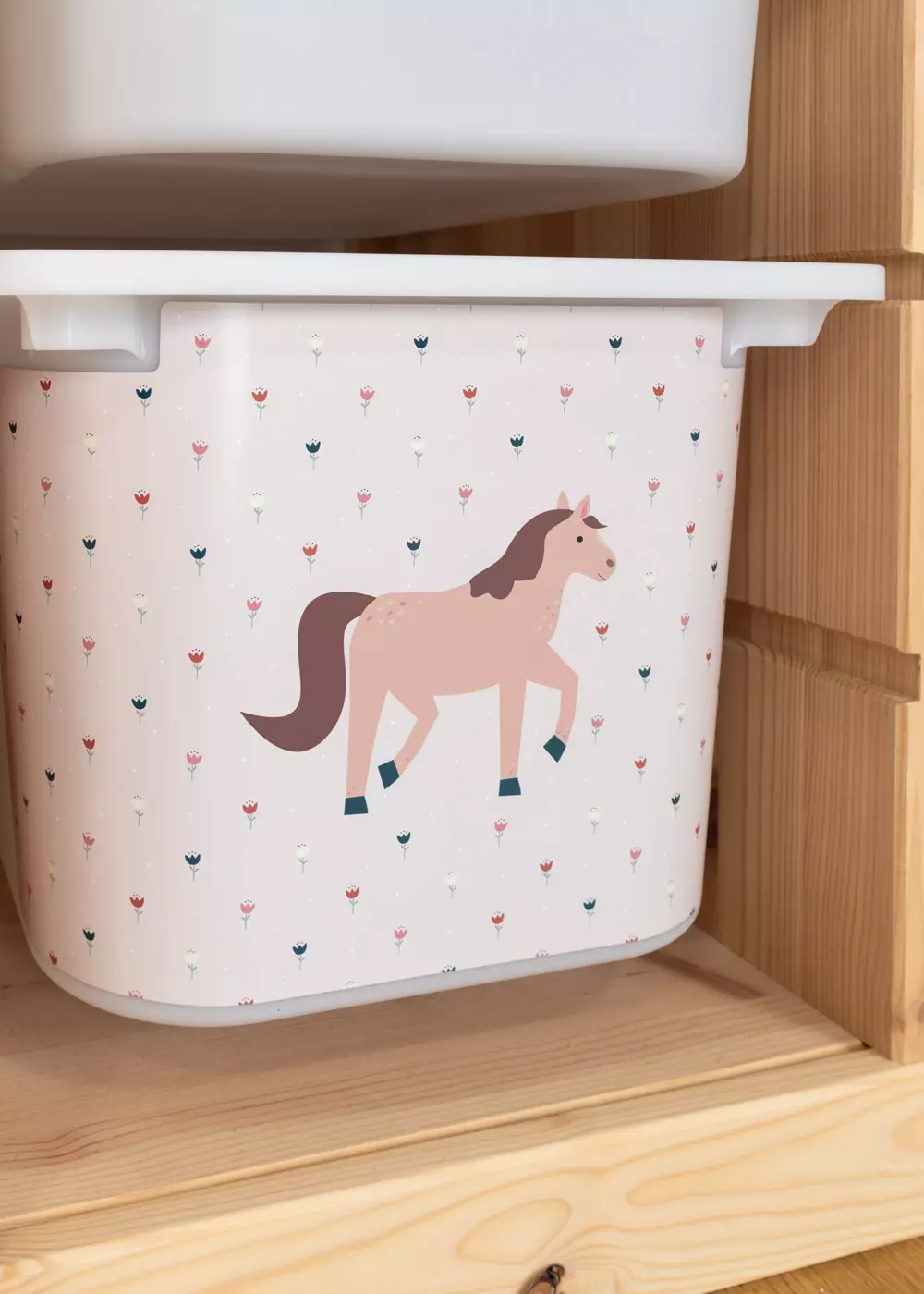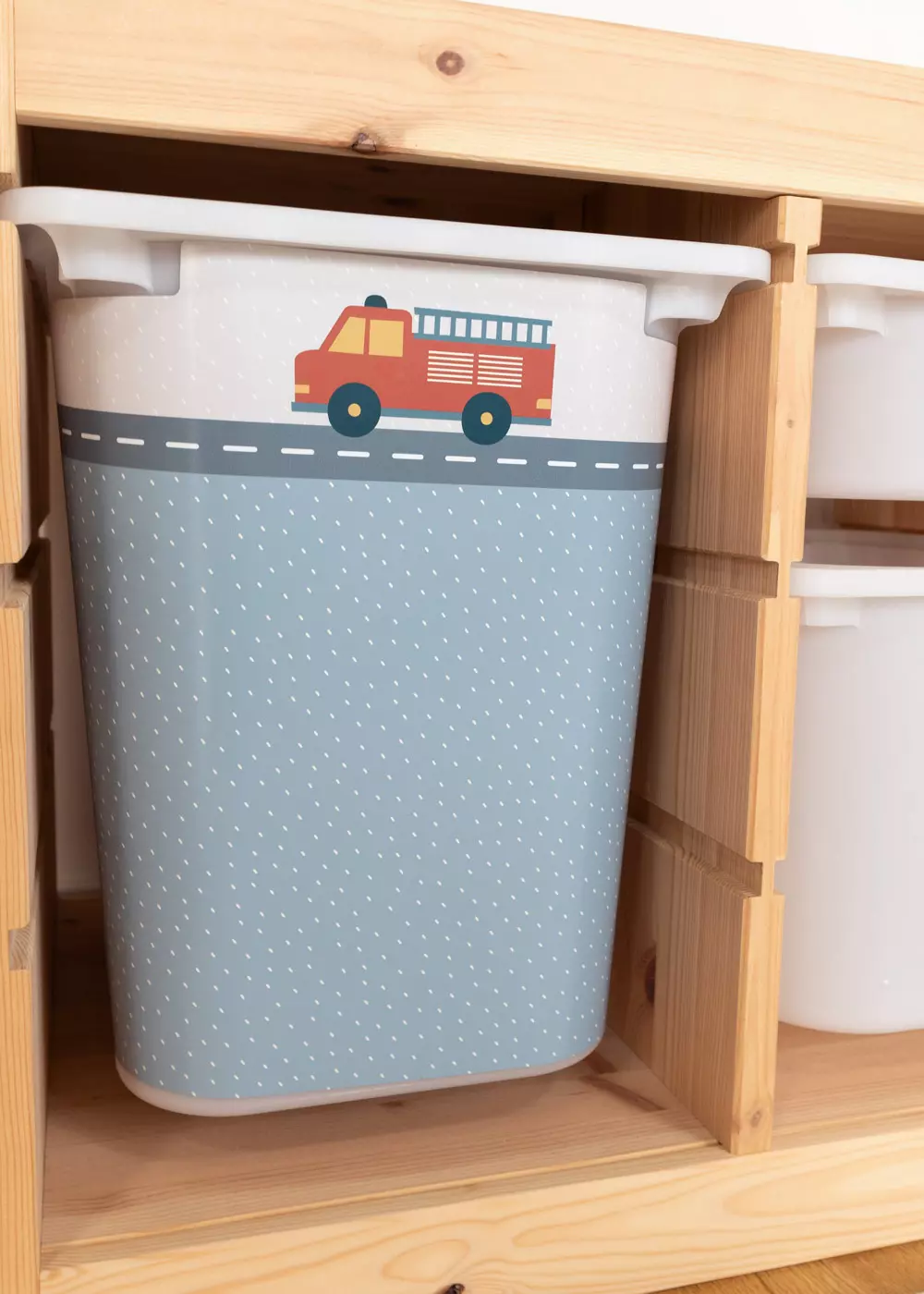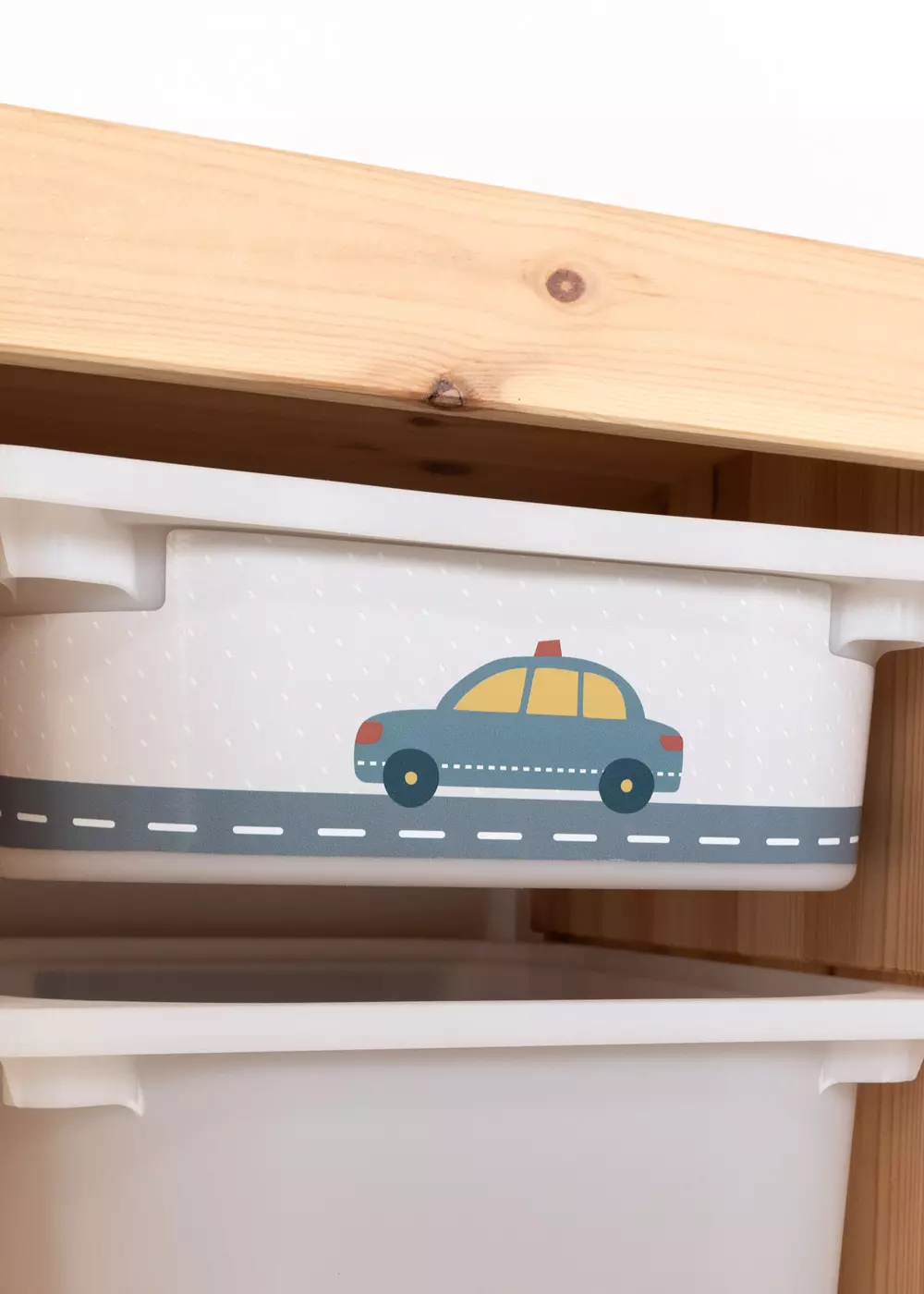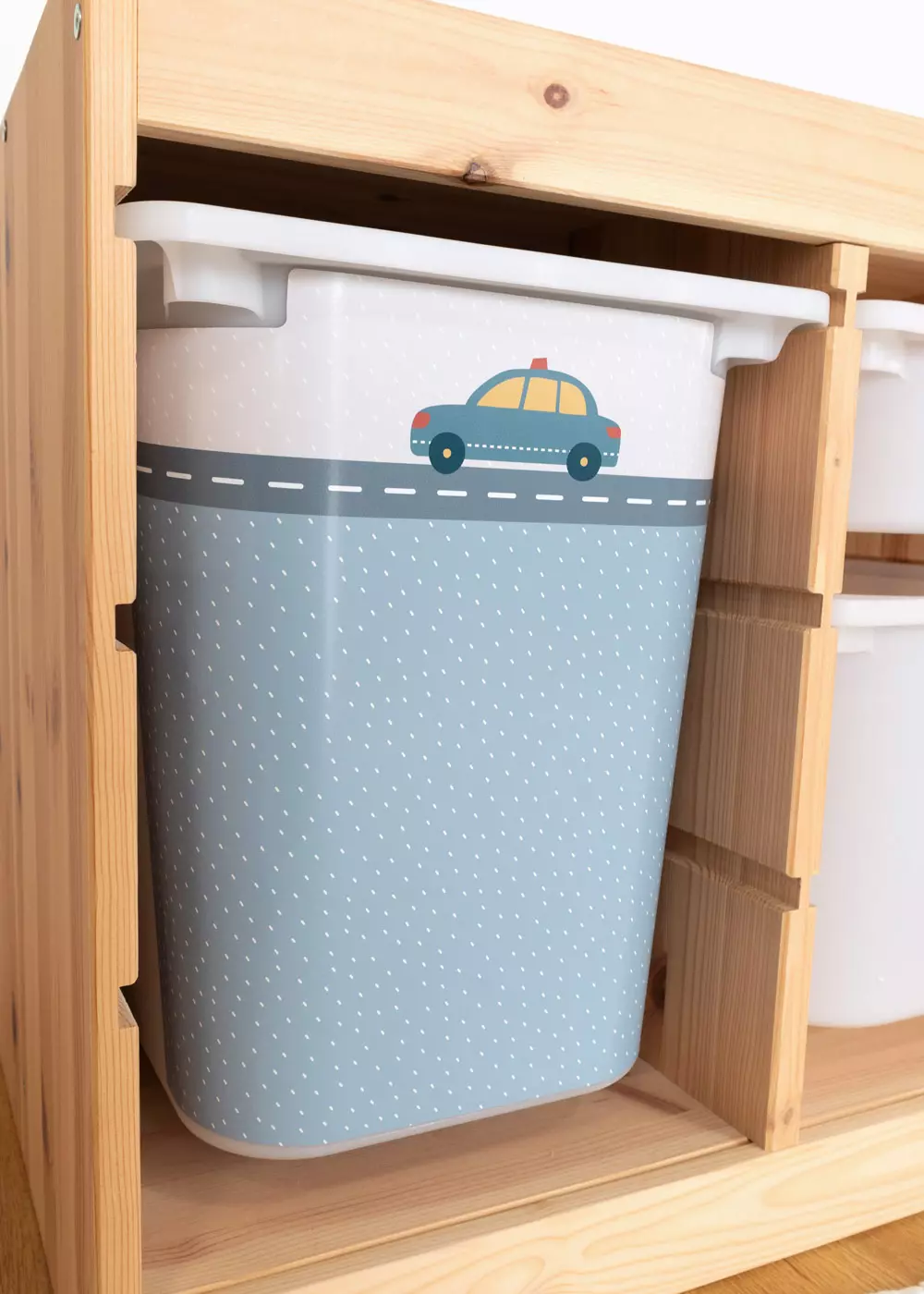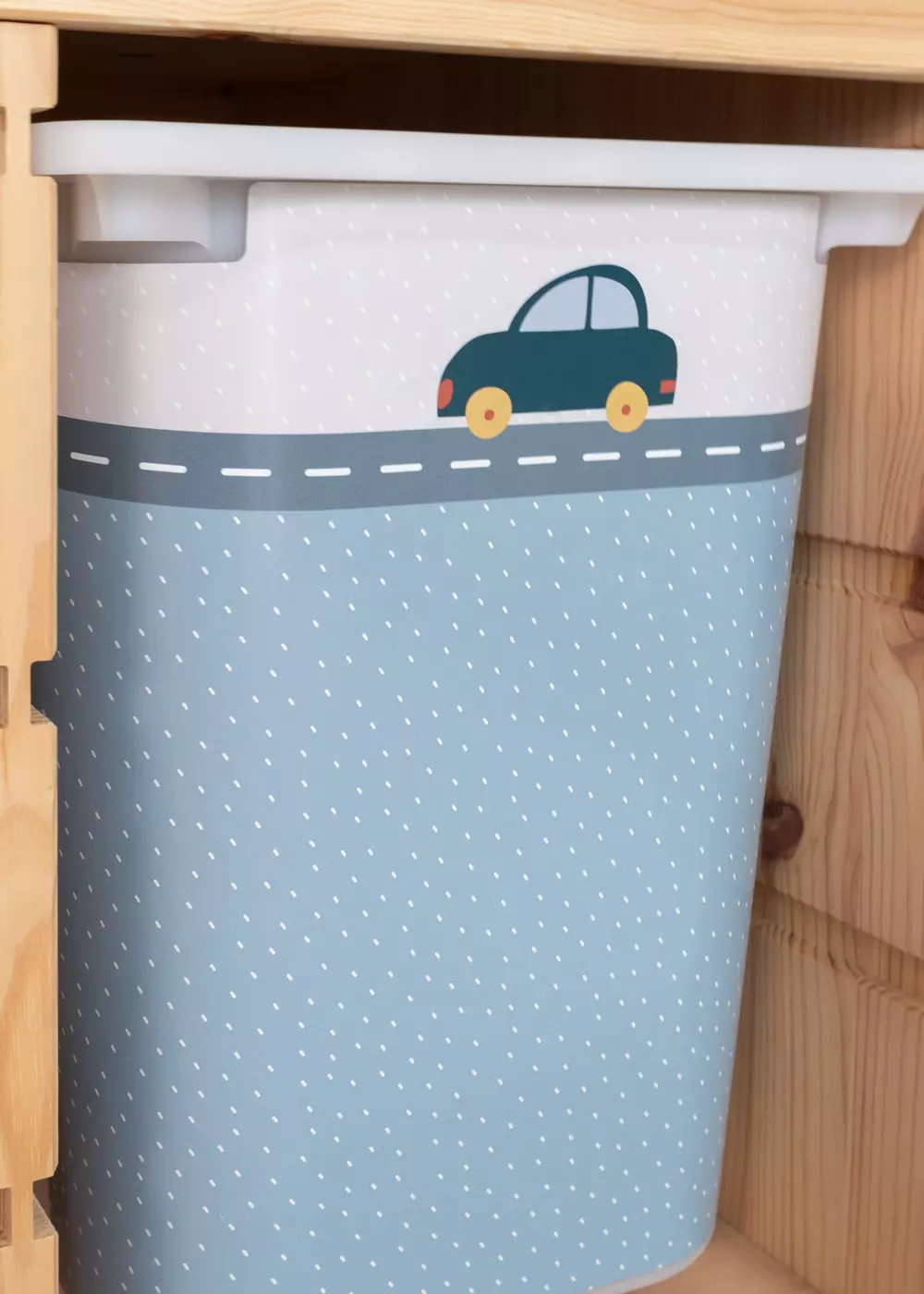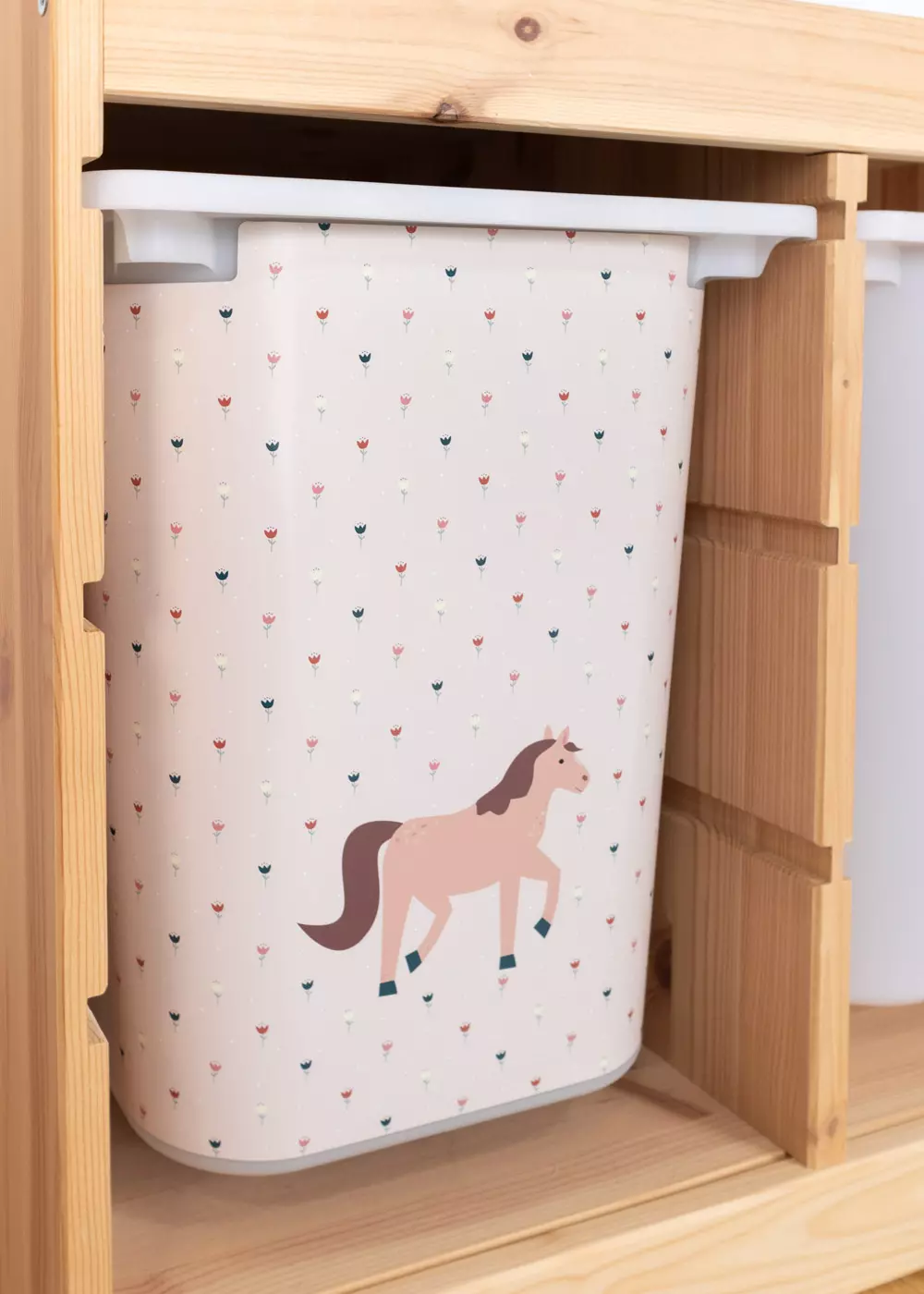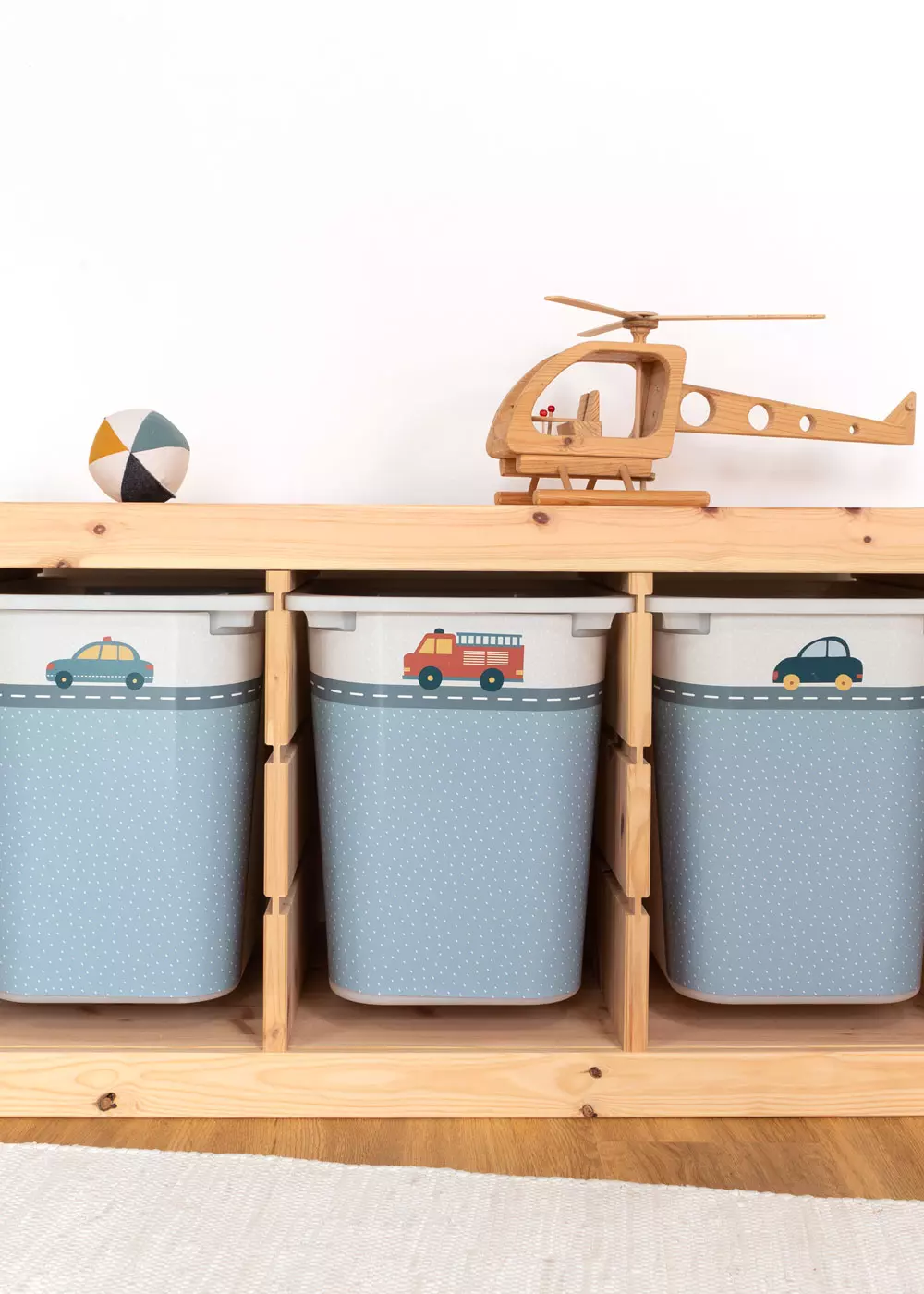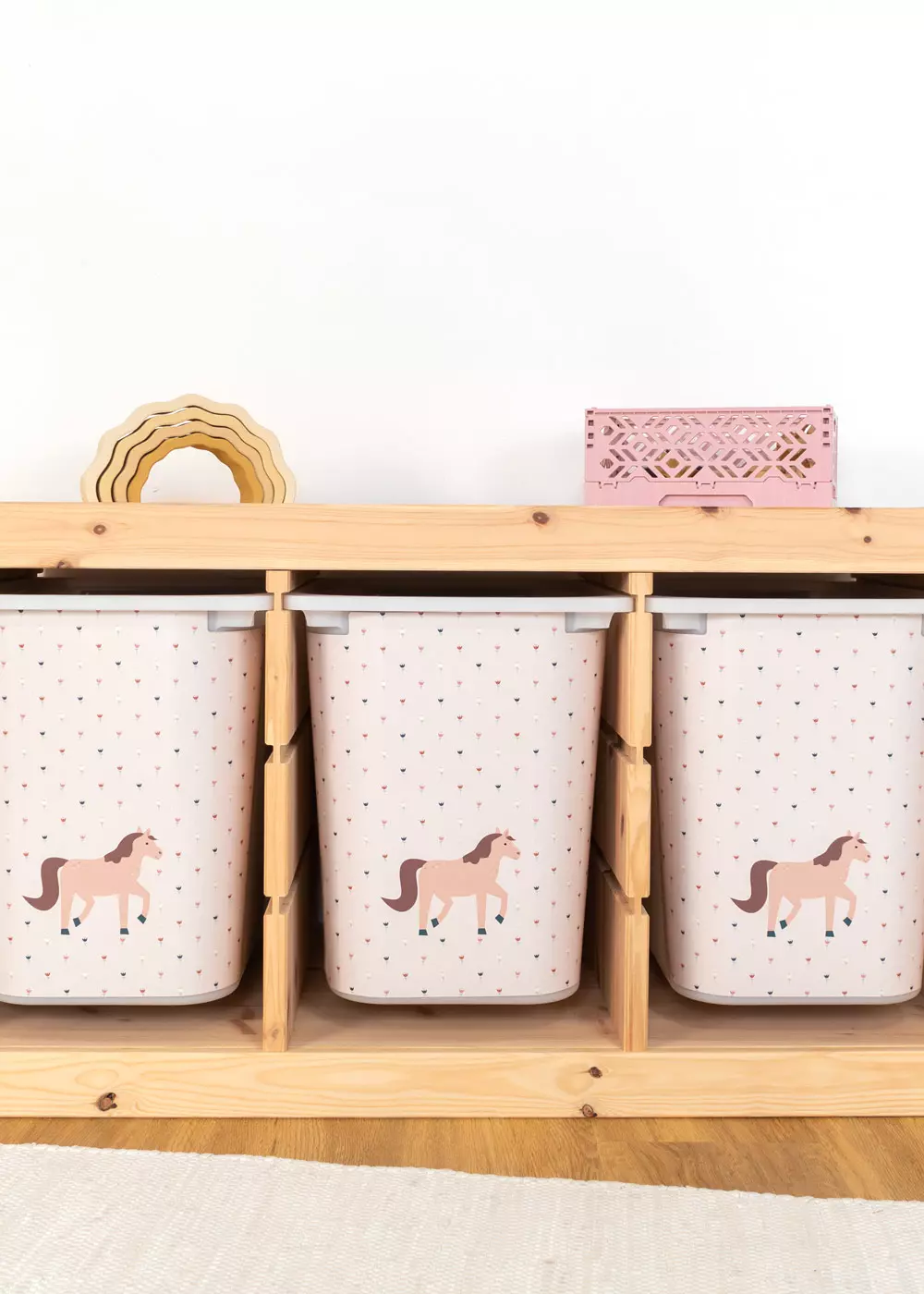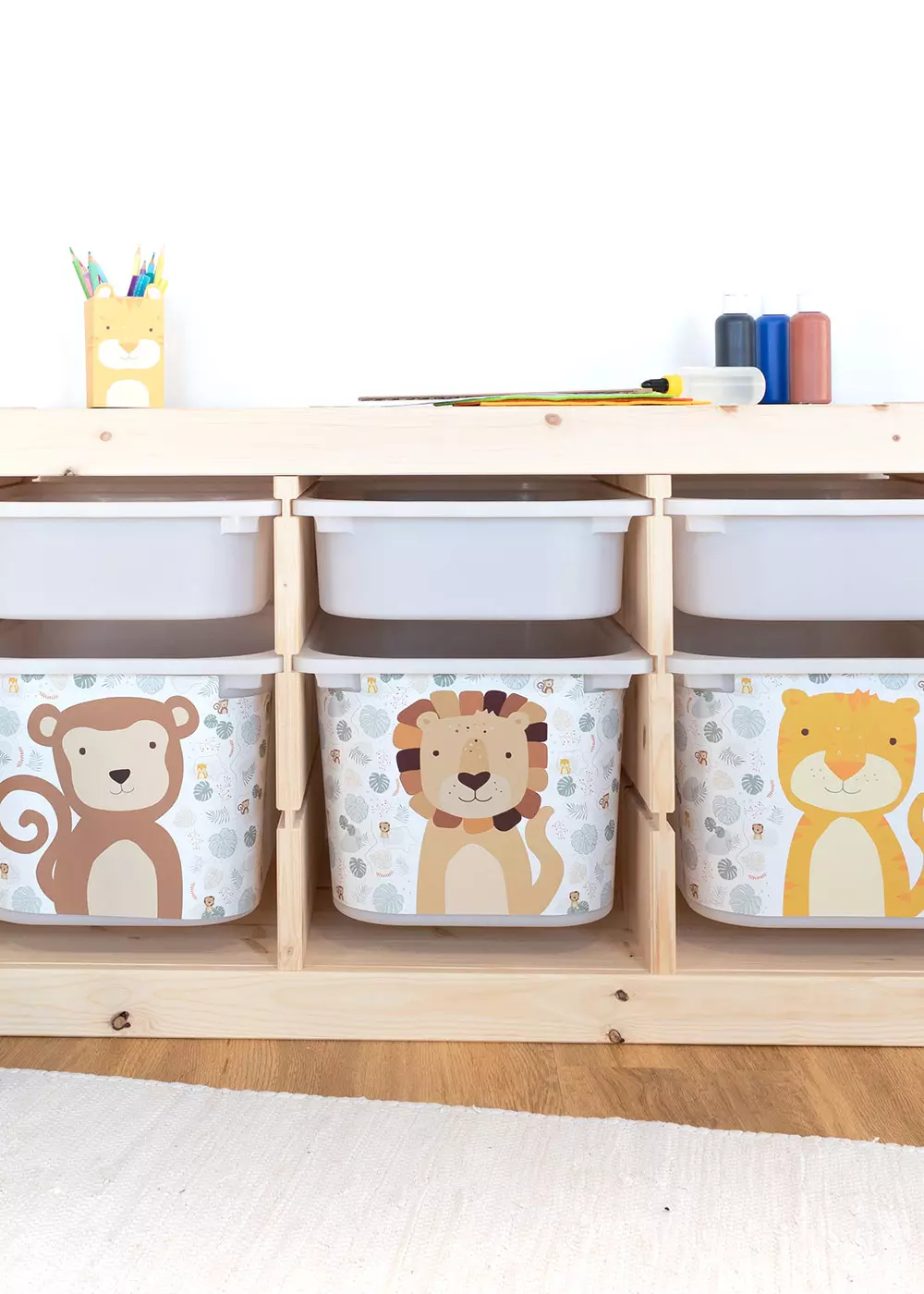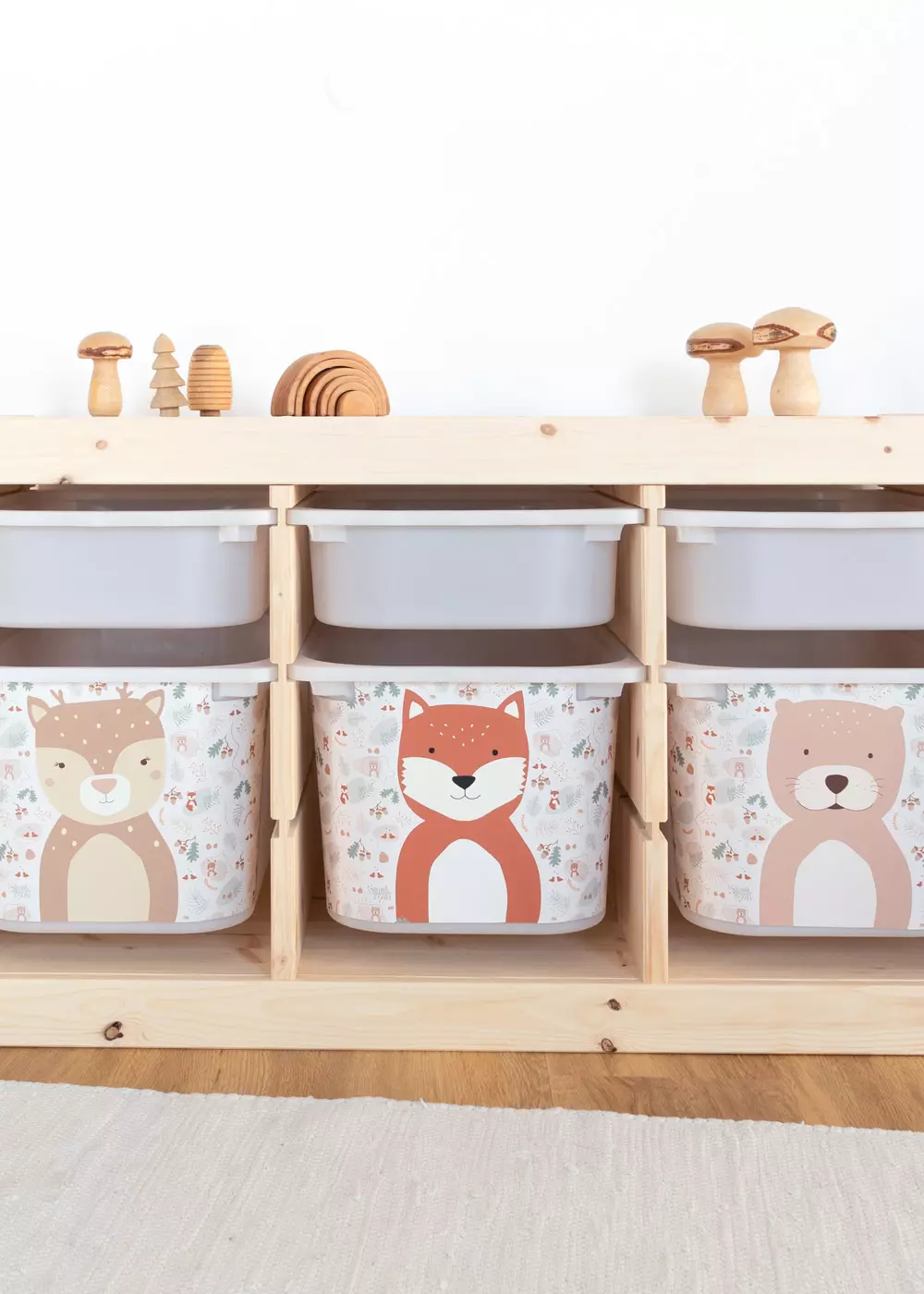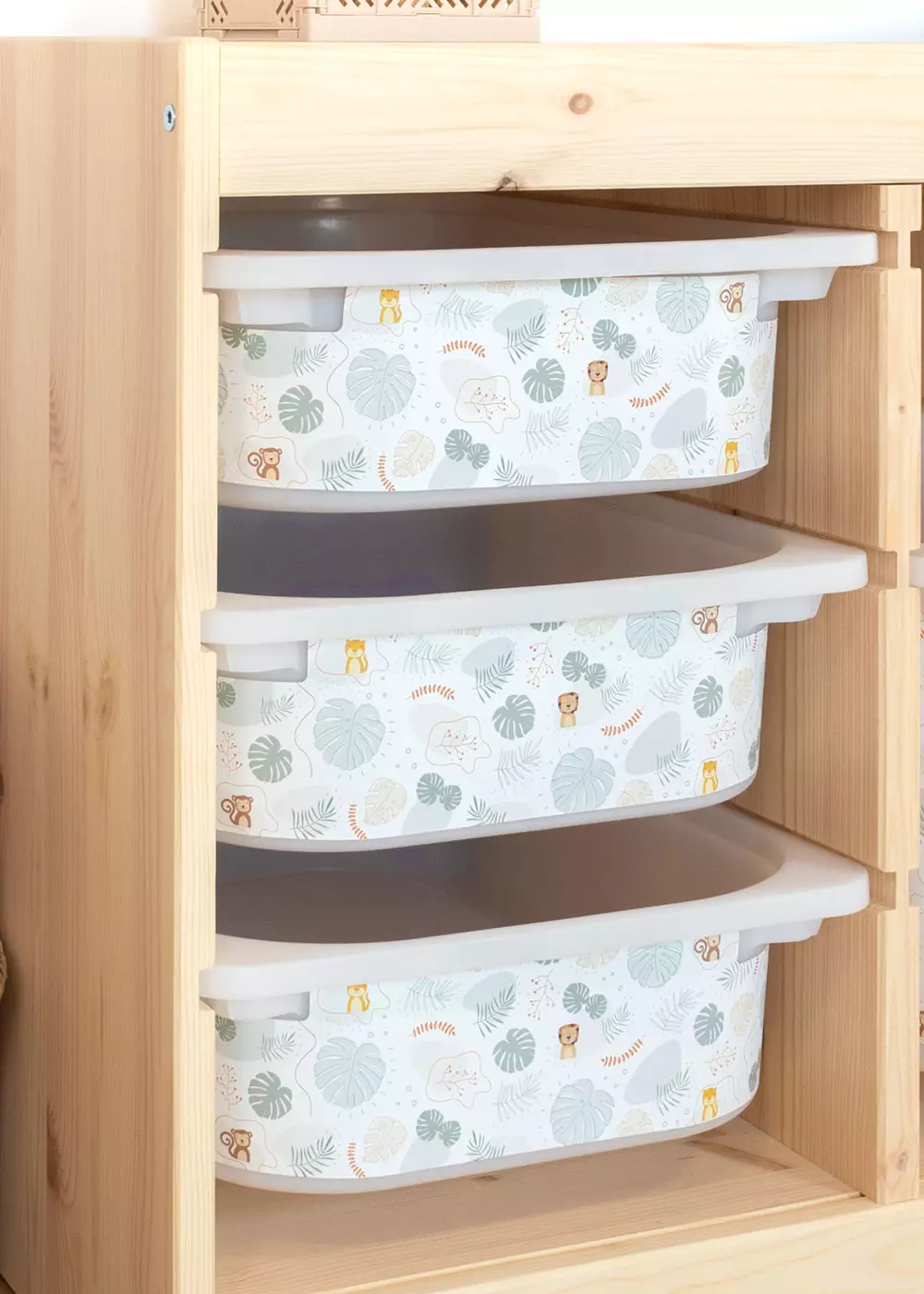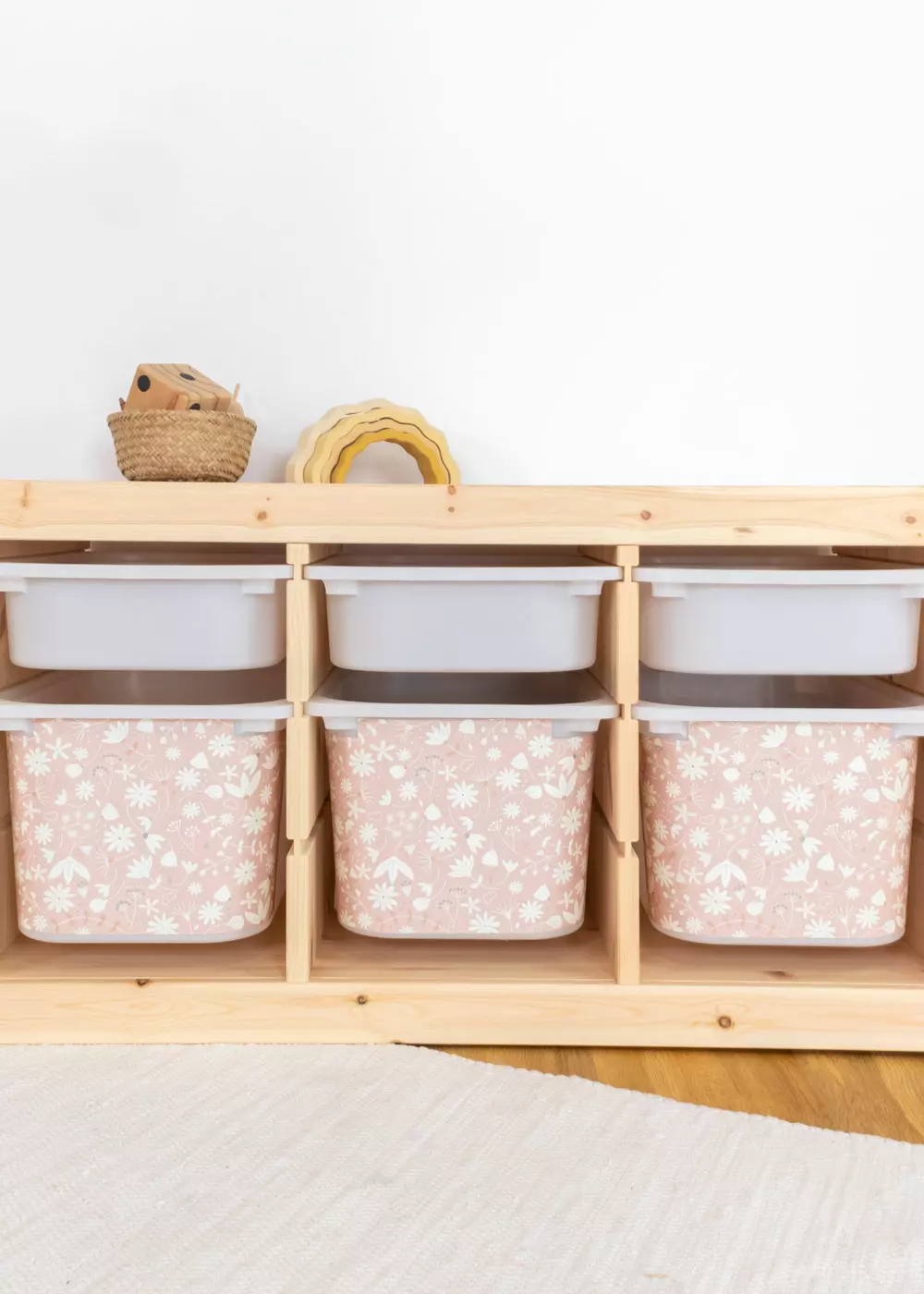Organisation in the children's room - store toys perfectly
The first step is to sort and group toys into different categories. Such categories could be, for example, cuddly toys, Lego, light animals, books, children's art, craft items, etc.
Tip: brainstorm with your children about the best way to categorise things. This creates greater acceptance and is fun.
After sorting, you know what's there and now you need to find the perfect organising system. Like many other parents, we recommend using the versatile products from IKEA. You'll find countless organisers and storage options for your toys.
Storage with IKEA TROFAST
Make sure that you store the toys in such a way that the child can access them without help if possible. You should also make sure that your children always have an overview of what is available. You can achieve this very well with the transparent IKEA TROFAST boxes, for example. You can also support your child with our organiser stickers.
KonMari in the children's room: Tidying up according to Marie Kondo in 4 steps
Bestselling author Marie Kondo convinces everyone of her tidying and organising method. Known as the KonMari principle, it promises to get a better grip on the flood of material things. Minimalism is the key word here! We met Jasmine Dünker from JOYFUL LIVING, who was one of the first German KonMari consultants to learn the tidying method from Marie Kondo herself in New York. With JOYFUL LIVING, Jasmine works as an interior design and organisation coach and helps to systematically and sustainably eliminate the chaos in your own home. She visited us in Limmaland and explained why tidying up with children is great.
Doesn't sound like your child at first? Jasmine explained to us that the biggest causes of clutter are the piles of toys and clothes. This means that children's rooms are usually too full. Most children and parents don't even know what's there anymore. A cluttered children's room creates excessive demands. It is important that children's rooms only contain toys that little people actually enjoy playing with. A cluttered children's room may be well-intentioned, but it slows down your children's creativity and their desire to discover new things.
Children have to process a flood of information every day. When they come home, they need an organised retreat that gives them structure and security. In a structured children's room, the body and soul can recover well.
But can children separate themselves from toys at all? Is it even possible to get children to muck out? We think YES!
In 4 steps to sustainable organisation in the children's room according to Marie Kondo
- Clearing out toys and clothes
- Letting go with gratitude and respect
- Get rid of the discarded toys & clothes promptly
- Every toy and item of clothing gets a fixed place
Clearing out toys and clothes in the children's room
Using the KonMari method, first clear out all the cupboards and put all the toys in a pile. This way, you can see the full extent of everything. Quite a lot? Don't worry - now it's time to clear out! Now you and your child can ask yourselves the following questions:
- What do we want to keep?
- Which toys do we enjoy?
- Which things have not been used for a long time or have never been used?
It is particularly important that you leave these decisions primarily to your child. Jasmine told us that children are real masters at sorting things out. This is mainly because children don't usually hold on to old things for too long. They don't think about whether they will use the toy again at some point. They either use it and play with it or they don't. It's as simple as that! Unlike us, they don't have any obligations such as "That toy was so expensive" or "I have to keep it because I got it from Grandma Marta." What's more, children very rarely attach hopes such as "Once I'm 5 years old, then ..." to a toy.
Jasmine says that children are still free inside and act purely intuitively. They usually know much more quickly what they like and what they want to keep. They also know what can go and what they simply don't need. Compared to adults, they can sort out superfluous things quickly.
This doesn't just apply to toys, but also to clothes. They know exactly what they like and enjoy wearing and what they don't. This also makes it easier for them to separate.
The expert has given us these tips for you:
- Muck out at the right time: take a morning to do this, because your mind is still fresh and you're still full of energy
- Don't keep categories too small: Cars, building blocks, dolls, etc. Make sure you don't get too small, because then it will be difficult to keep organisation in the long term
- Let your children decide: the children decide what stays and what goes. Even if the toy was expensive or was given to them by grandma.
- Muck out regularly: This is the only way to prevent too many toys and clothes from piling up again.
- Dispose of discarded toys promptly or give them away: otherwise there is a risk that they will be unpacked again.
- Find the perfect storage option for current toys: Purchase the right boxes etc. These should be practical and make tidying up easier.
- Parents have a role model function. It is important to set an example for children organisation . If parents emphasise the importance of organisation and are able to positively connote the term organisation , the children will also adopt this. Children will then be open to the idea of "clearing out" and organisation in the children's room.
- Find a rhythm for tidying up: It doesn't have to be tidy all the time. But you should find your rhythm. Once the room is organised, tidying up once a week is enough. Tidying up every day can lead to tension, frustration and a bad mood on both sides. Perhaps this is also a good approach for you: Access to the bed as well as the bed itself must remain clear and once a week, when the children's room is vacuumed, everything must be tidied up.
Letting go according to KonMari: with gratitude and respect
Sometimes it's not so easy to let go of things you once loved. According to KonMari, it helps if we say thank you to each item in order to part with it respectfully. Do you think that's a bit daft? But Jasmine knows that KonMari can help in the children's room. It's the best way for children to say goodbye to toys. And where to put the stuff? It's too good to throw away!
Getting rid of superfluous toys and clothes promptly according to KonMari
Clearing out doesn't mean that everything that isn't useful for your child has to end up in the bin. We all know that most things are in great condition - just no longer interesting enough for your child and far too good for the rubbish bin. But other children are happy about the things that have been sorted out. You might even get some money for the toys and can decide together with your child what you would like to do with them. You can pass on toys that are complete and in good condition:
- Classified ad portals on the internet: Here you can usually sell or give away the toys you have sorted out quickly and easily. Interested parties can either come and collect the items from you or you can send them as a parcel.
- Flea market: The flea market is great fun for the whole family. Children's toys in particular are very popular flea market items!
- Acquaintances: There are often children in your immediate circle of family and friends who are happy to receive discarded toys. Children's interests change, and things that were highly coveted a few months ago are no longer of interest today. But perhaps the neighbour's child still loves to play with it.
- Donate: You can donate your discarded toys to charitable institutions or aid organisations. Someone there is sure to be happy!
Whether you want to give away, sell or donate the things you've sorted out, it's important that you get rid of them quickly. Because once the boxes have been sitting around for several weeks, they will be unpacked again at some point. And the same game starts all over again. Therefore, after you have done organisation in the children's room, quickly think about where the toys you have sorted out can quickly and sensibly find a new home.
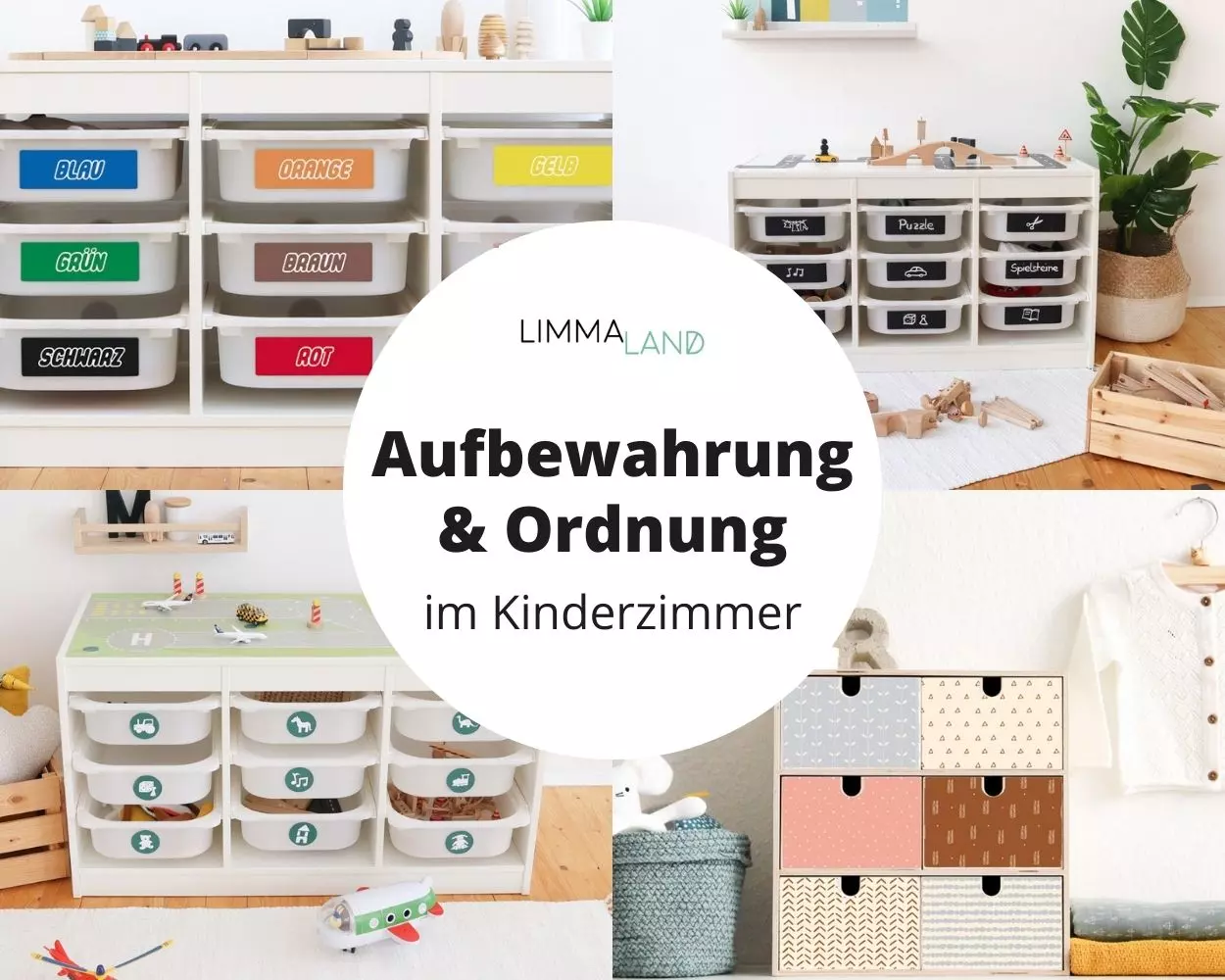

.jpg)
